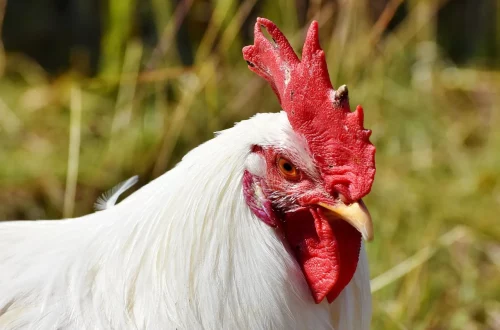
Tips for Introducing a New Kitten to Your Older Cat
Introducing a new kitten into a household that already has an older cat can be a delicate process. Cats are known for their territorial nature, and introducing a new member to the family may result in stress and anxiety for both pets. Understanding the dynamics of cat behavior and taking the right approach can create a harmonious environment for both your older cat and the newcomer. The key lies in patience, preparation, and a gradual introduction process.
The journey begins as you consider the personalities of both your older cat and the new kitten. Each cat has its unique temperament, which can greatly influence how they will react to one another. Therefore, observing their behavior and ensuring that both animals feel secure in their surroundings is essential. As you embark on this journey, maintaining a calm and positive atmosphere will be beneficial for both your existing cat and the new addition.
By taking the time to prepare for the introduction, you can minimize potential conflicts and help both cats adjust to their new living situation. This article will delve into various strategies and tips that will not only ease the transition but also foster a loving relationship between your older cat and the new kitten.
Preparing Your Home for the New Arrival
Before bringing the new kitten home, it is crucial to prepare your living space to accommodate both cats. Start by designating a separate area for the new kitten, equipped with all the essentials such as food and water bowls, a litter box, toys, and a cozy bed. This designated space will serve as a safe haven where the kitten can acclimate to its new environment without feeling overwhelmed.
Moreover, ensure that your older cat has access to its favorite spots and resources. Cats are creatures of habit, and maintaining their routine can help reduce anxiety. Place your older cat’s food and water bowls, litter box, and resting areas in locations that are familiar to them. This way, they won’t feel threatened by the presence of the new kitten.
It’s also important to cat-proof your home. Kittens are naturally curious and may get into trouble if left unsupervised. Ensure that hazardous items, such as toxic plants, small objects, and electrical cords, are out of reach. Additionally, consider using baby gates or barriers to create safe zones for both your older cat and the new kitten, allowing them to observe each other from a distance without direct contact.
Lastly, stock up on toys and activities to keep both cats entertained. Engage them in playtime to help alleviate any tension and promote positive interactions. Puzzle toys and interactive play can help redirect any potential aggression or anxiety. Ensuring that both cats have their own resources will prevent competition and encourage a peaceful coexistence.
Gradual Introductions: The Key to Success
Once you have prepared your home, the next step is to introduce both cats gradually. Rushing this process can lead to stress and hostility. Start by allowing the new kitten to explore its designated area while keeping the older cat in a separate space. This allows each cat to become familiar with the other’s scent without direct contact.
After a few days, you can begin the scent exchange process. Swap bedding or use a soft cloth to rub each cat and then let the other cat smell it. This creates a positive association with each other’s scents and helps them become accustomed to one another. Repeat this process daily, allowing them to investigate each other’s presence without any pressure.
Once both cats seem comfortable with each other’s scent, you can start supervised visits. Keep these interactions short and positive. Use treats and praise to reward calm behavior, ensuring that both cats feel safe and secure. If either cat shows signs of aggression or fear, separate them immediately and give it more time before attempting another introduction.
As they become more comfortable with each other, you can gradually increase the length of these interactions. Always monitor their behavior during these sessions, and never force them to interact if they’re not ready. Patience is key; some cats may take weeks or even months to fully accept a newcomer.
Monitoring Behavior and Addressing Issues
During the introduction process, it’s essential to observe both cats’ behaviors closely. Look for signs of stress or discomfort, such as hissing, growling, or hiding. These behaviors indicate that one or both cats may need more time to adjust to the situation. If you notice any signs of aggression, intervene calmly and separate the cats.
It’s also crucial to provide positive reinforcement for good behavior. When both cats are calm and interacting positively, offer treats or praise to reinforce this behavior. This will help them associate each other with positive experiences, fostering a better relationship over time.
In some cases, it may be necessary to consult a veterinarian or a feline behaviorist. They can provide additional strategies and guidance tailored to your specific situation. If your older cat continues to exhibit signs of stress or aggression, professional help can be invaluable in creating a harmonious environment.
Additionally, be mindful of the changes in your older cat’s behavior. Some cats may become more withdrawn or exhibit changes in eating habits due to the stress of a new family member. Providing extra attention, playtime, and reassurance can help ease their anxiety.
Creating a Harmonious Living Environment
Once both cats have successfully adjusted to each other’s presence, it’s important to foster a harmonious living environment. Ensure that both cats have their own space, toys, and resources to prevent competition. This includes separate litter boxes, food and water bowls, and resting areas. By providing individual resources, you can help minimize territorial disputes and promote a peaceful coexistence.
Encourage positive interactions by engaging in joint play sessions. Use interactive toys that allow both cats to participate without feeling threatened. This not only helps strengthen their bond but also provides mental stimulation and physical exercise.
It’s also vital to maintain a routine. Cats thrive on predictability, and keeping a consistent schedule for feeding, playtime, and bonding can help both pets feel secure. Regularly check in with both cats to ensure they are comfortable with their living situation and make adjustments as needed.
Lastly, be patient. Building a strong relationship between your older cat and the new kitten may take time. Some cats may become close companions, while others may only tolerate each other. Understanding and respecting their unique personalities will go a long way in creating a loving and harmonious home.
In conclusion, introducing a new kitten to your older cat requires careful planning, patience, and observation. By preparing your home, allowing for gradual introductions, monitoring behavior, and creating a harmonious environment, you can help both pets adjust to their new living situation. With time and effort, your household can become a peaceful sanctuary for both your older cat and the new addition.
*Disclaimer: This article is not intended as medical advice. For any health issues or concerns regarding your pets, please consult a qualified veterinarian.*




